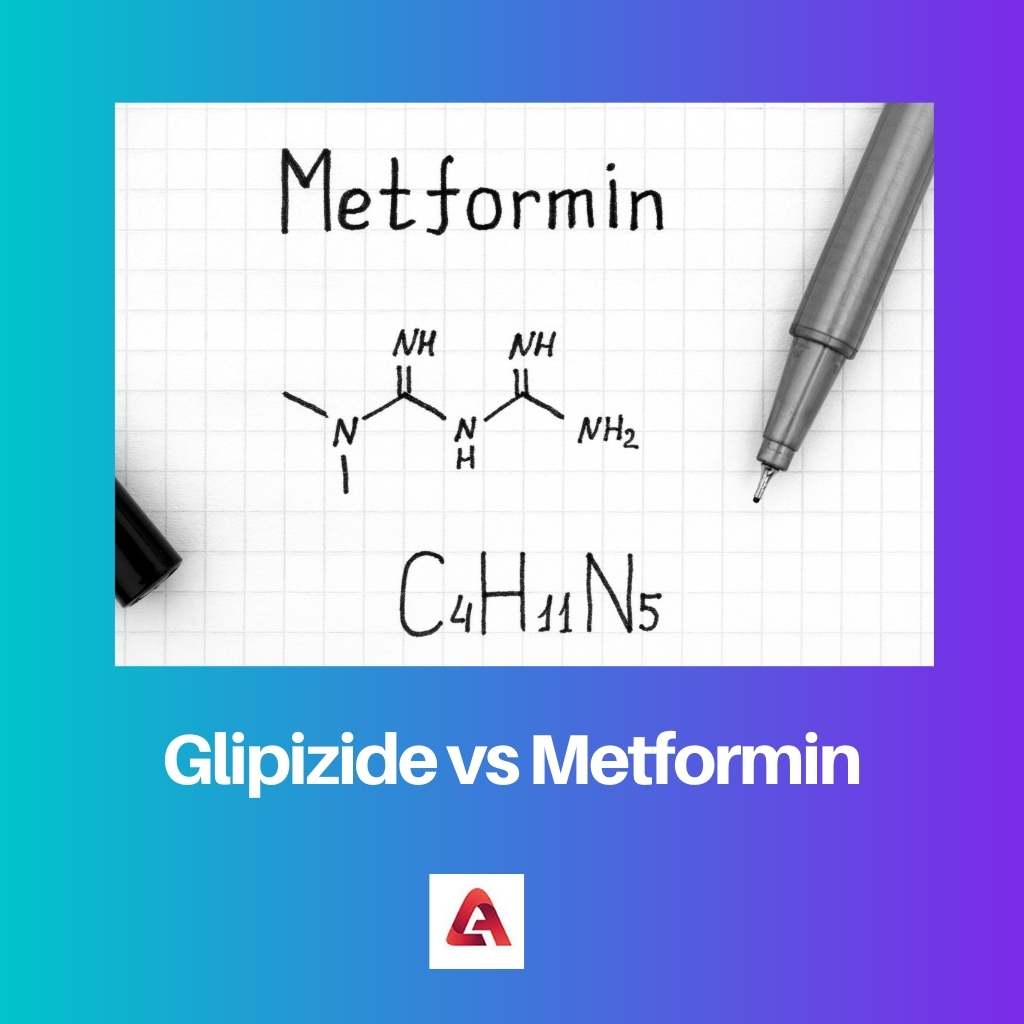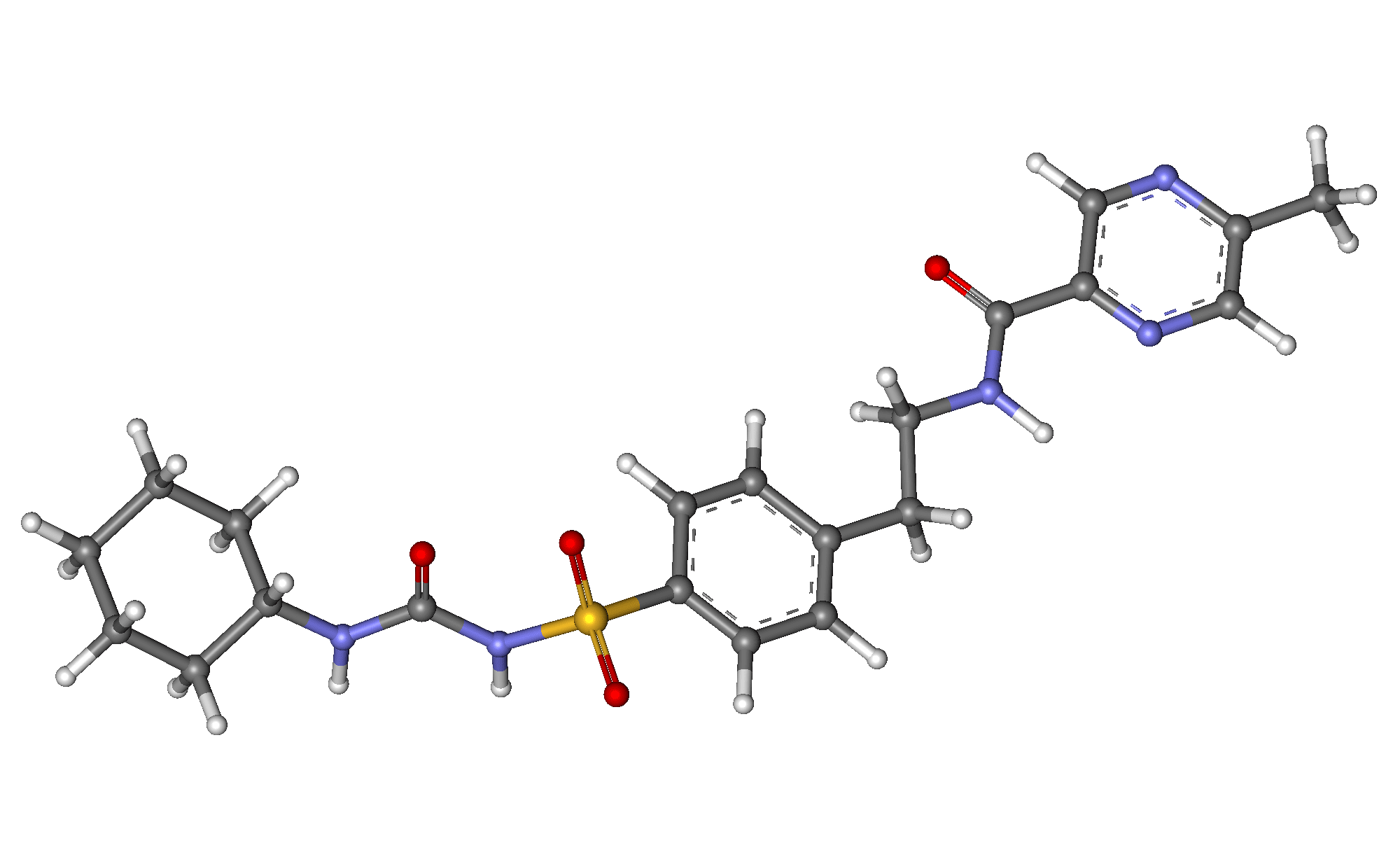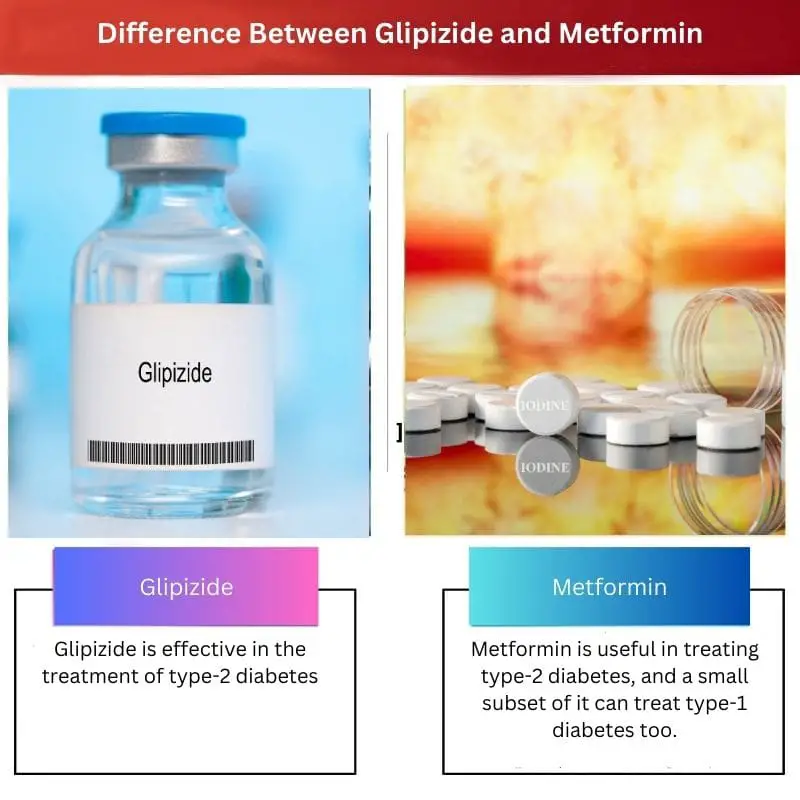Type 2 diabetes is a chronic disease affecting the body’s blood sugar level working. It is a widespread disease with symptoms like frequent urination, fatigue, blurred vision, increased thirst and hunger, etc.
There are cases when the patient doesn’t feel the symptoms. Glipizide and Metformin are type-2 diabetes-treating drugs.
Key Takeaways
- Glipizide stimulates the pancreas to release more insulin, lowering blood sugar levels.
- Metformin reduces glucose production in the liver and improves insulin sensitivity.
- Both medications treat type 2 diabetes, but metformin is the first-line treatment.
Glipizide vs Metformin
Glipizide is a sulfonylurea medication that stimulates the pancreas to produce more insulin, which helps to lower blood sugar levels. It is taken once or twice a day with meals. Metformin is a biguanide medication that reduces glucose production in the liver and improves insulin sensitivity in the body.

Glipizide is a short-acting and rapid drug that is to be taken orally. It is used for the treatment of type-2 diabetes in adults and is a drug that belongs to the sulfonylureas group.
It helps in lowering the blood sugar level and increasing the efficiency of using insulin. It does not help treat type-1 diabetes.
Metformin belongs to the biguanides class of drugs.
It is proven to be effective in treating type-2 diabetes in adults and children older than 10 by decreasing the measure of glucose that a person absorbs from food and that made by the liver.
Comparison Table
| Parameters of Comparison | Glipizide | Metformin |
|---|---|---|
| Treats | Glipizide is effective in the treatment of type-2 diabetes | Metformin is useful in treating type-2 diabetes, and a small subset of it can treat type-1 diabetes too. |
| Class of Drug | Glipizide’s class of drug is sulfonylureas. | Metformin’s class of drug is biguanides. |
| Dose | Glipizide is taken in amounts of 5mg once a day. | Metformin is taken in amounts of 500mg twice a day. |
| Function | It helps in the production of insulin in the pancreas by lowering the blood sugar level. | It controls the glucose amount in blood by decreasing our glucose absorption from food and our liver. |
| Side effects | Rashes, blisters, dizziness, and hives are some common side effects of Glipizide. | Cramps, vomiting, diarrhoea, nausea, headache, muscle pain, etc., are some common side effects of Metformin. |
What is Glipizide?
Glipizide is a drug that is a member of the sulphonylureas class of drugs.
It causes the production of insulin in the pancreas to help the body use insulin and ultimately lowers the blood sugar level.
Glipizide does not help treat type 1 diabetes. Its dosage is 5 mg, to be taken once a day. Diabetes is not a disease that can be cured just by medication.
Therefore alongside the treatment with Glipizide, the patient must also keep a check on their eating habits and activeness by including healthy food items in their diet and increasing exercise.
A healthy lifestyle is a vital aspect of treating diabetes.
As much as glipizide is helpful in the treatment of diabetes, it might also cause some side effects.
Rashes, hives, blisters, redness and itching of the skin, light-coloured stools, sore throat, and random bleeding or bruising can be some of the prominent side effects of the drug.

What is Metformin?
Metformin is the most popular drug among doctors for the treatment of type 2 diabetes.
It is such a versatile drug that, apart from treating adults with type 2 diabetes, it is also valuable for treating the condition in kids over the age of 10.
A subset of metformin can also be used for the treatment of type 1 diabetes. It comes from the biguanides class of drugs.
Metformin works by controlling the glucose amount in blood by lowering the patient’s glucose absorption from their food as well as from the liver.
Also, it is the best antidiabetic drug to promote weight loss and reduce the condition of cardiovascular complications.
The suggested dose of metformin is 500mg, taken twice daily.
But apart from its advantages, it also has several side effects. Gastrointestinal problems, muscle pain, nausea, vomiting, headaches, nail changes, heat burn, etc., are some of metformin’s most common side effects.
In the end, metformin is just part of the medication, and the patient must also simultaneously look after their diet and exercise.
Main Differences Between Glipizide and Metformin
- Glipizide is helpful in treating type-2 diabetes, whereas Metformin is useful in treating type-2 and type-1 diabetes.
- Glipizide helps produce insulin in the person’s pancreas by lowering blood sugar levels. Metformin effectively controls the glucose amount in the blood by checking the glucose absorption from the liver and food.
- Glipizide is a member of the Sulphonylureas class of drugs, while Metformin is a member of Biguanides.
- Glipizide is taken in a dose of 5mg once a day. On the other hand, Metformin is taken at a dose of 500mg twice a day.
- Side effects of Glipizide can be blisters, dizziness, headaches, rashes, hives, etc., while Metformin’s side effects include digestive problems, cramps, nausea, vomiting, fever, etc.




